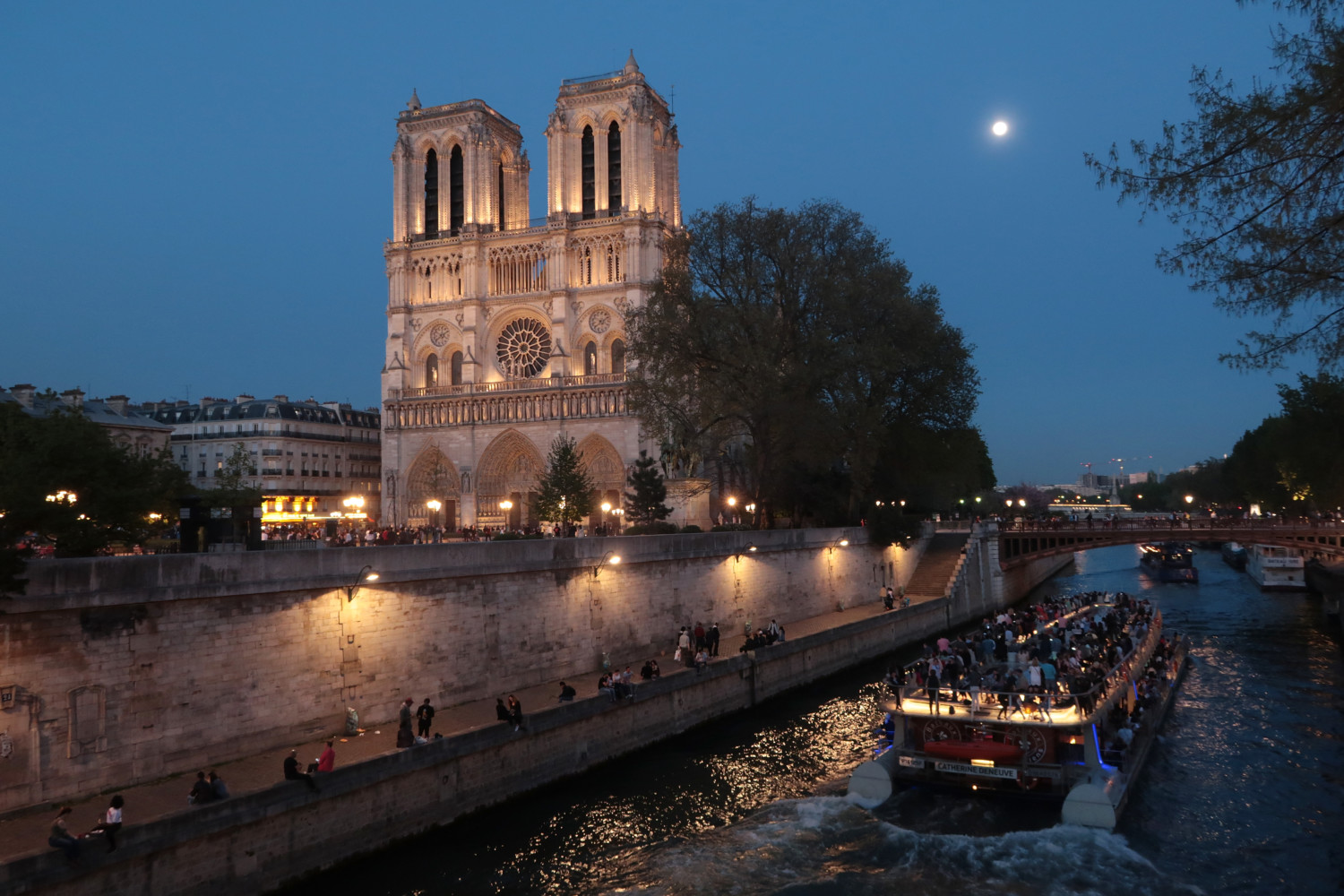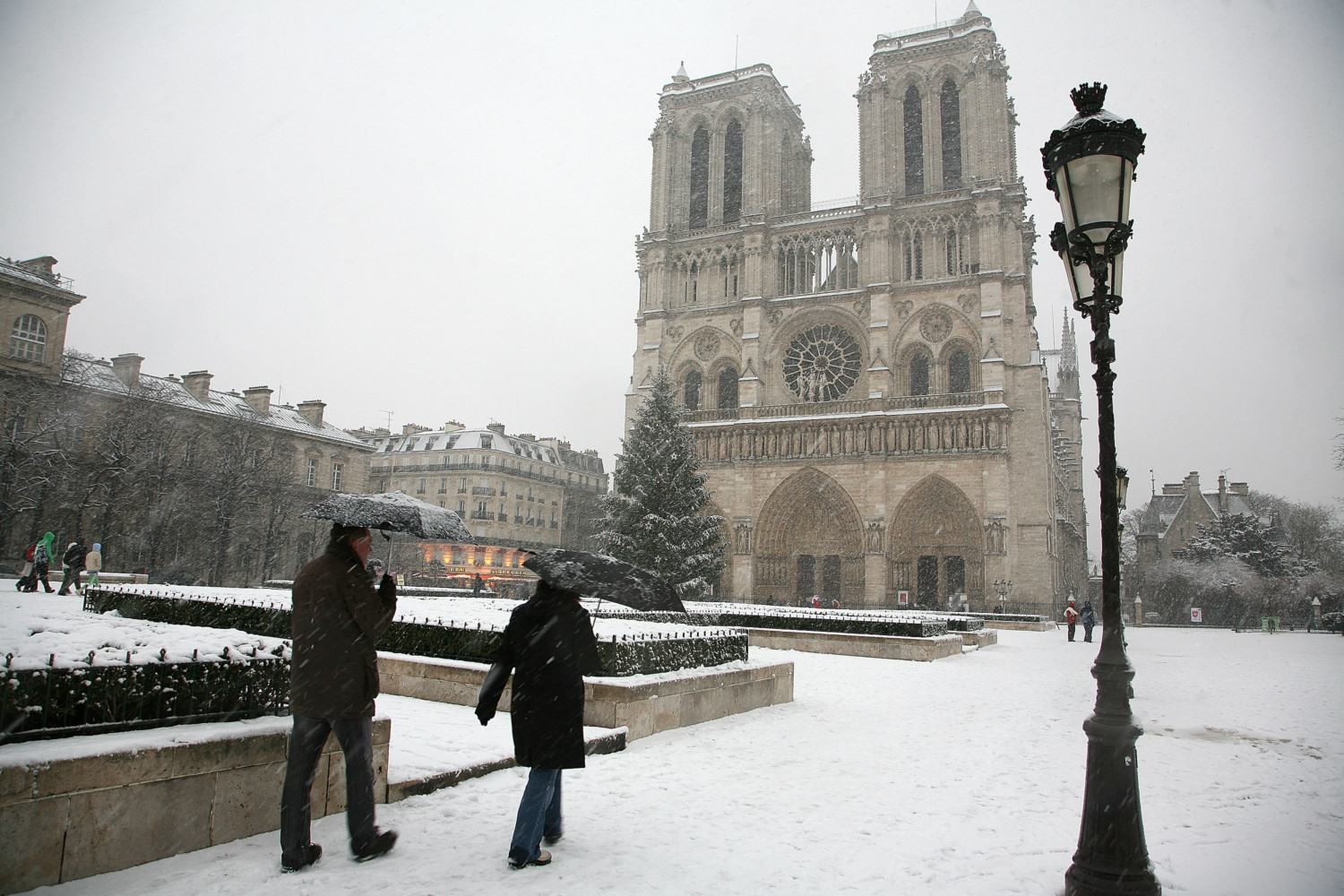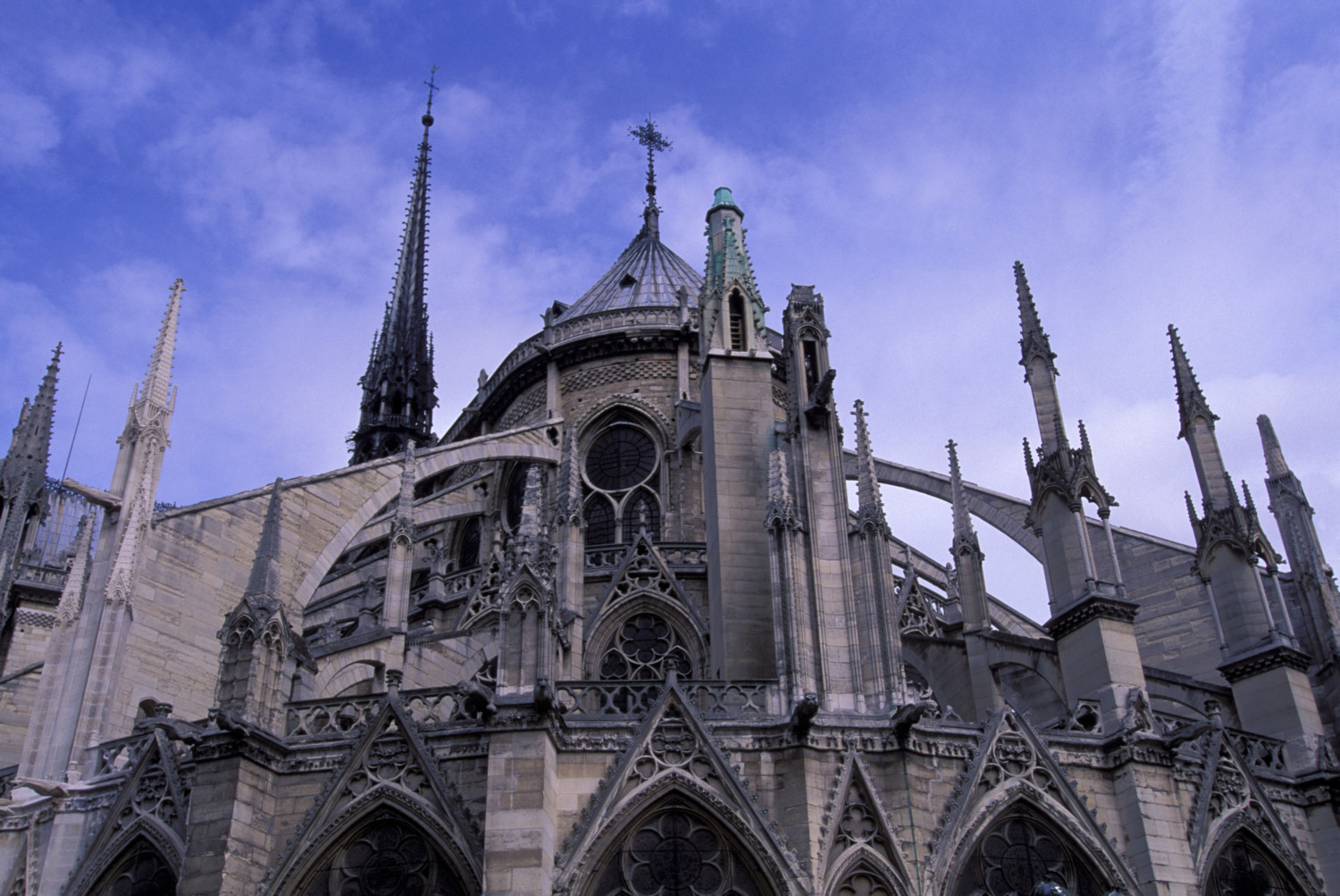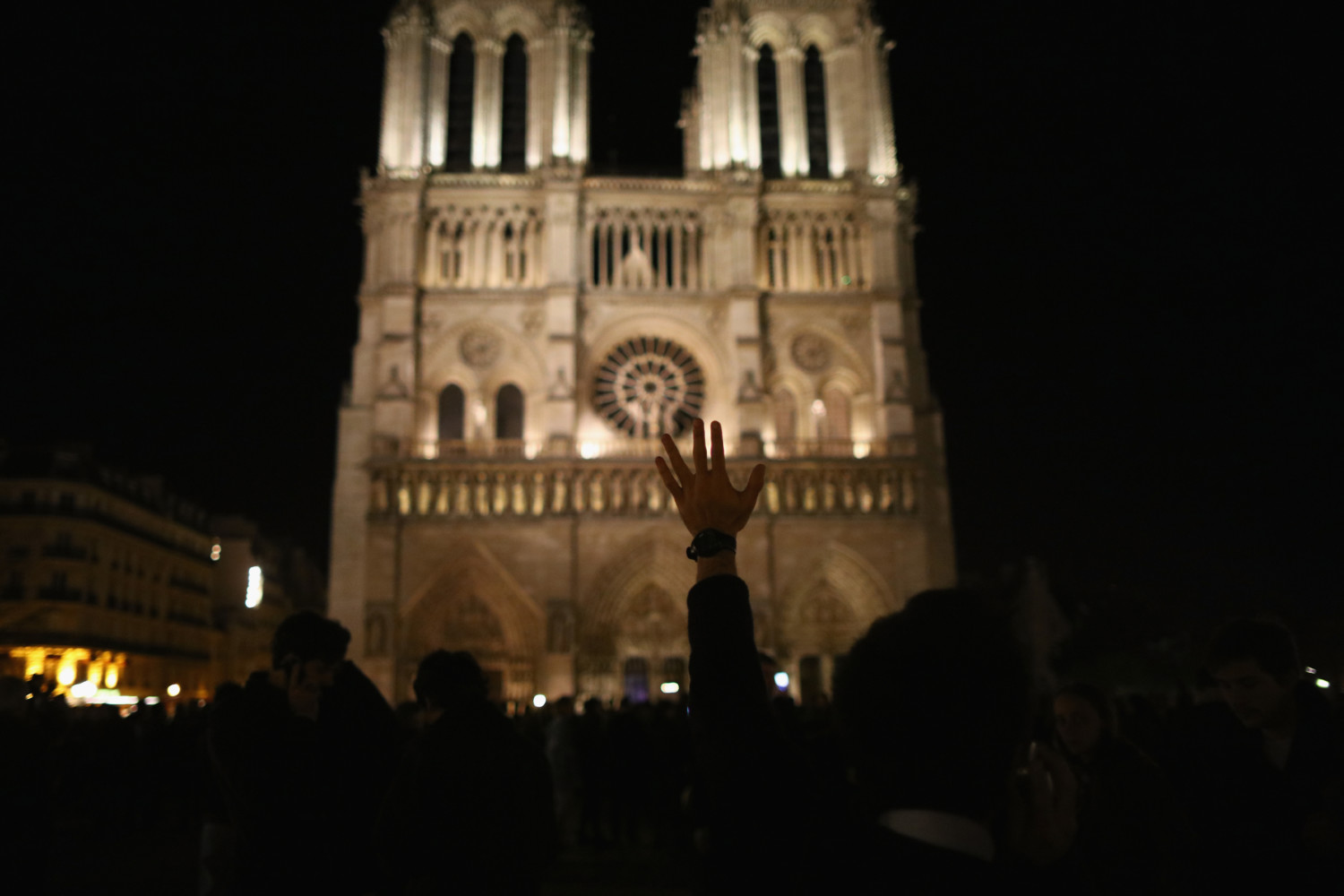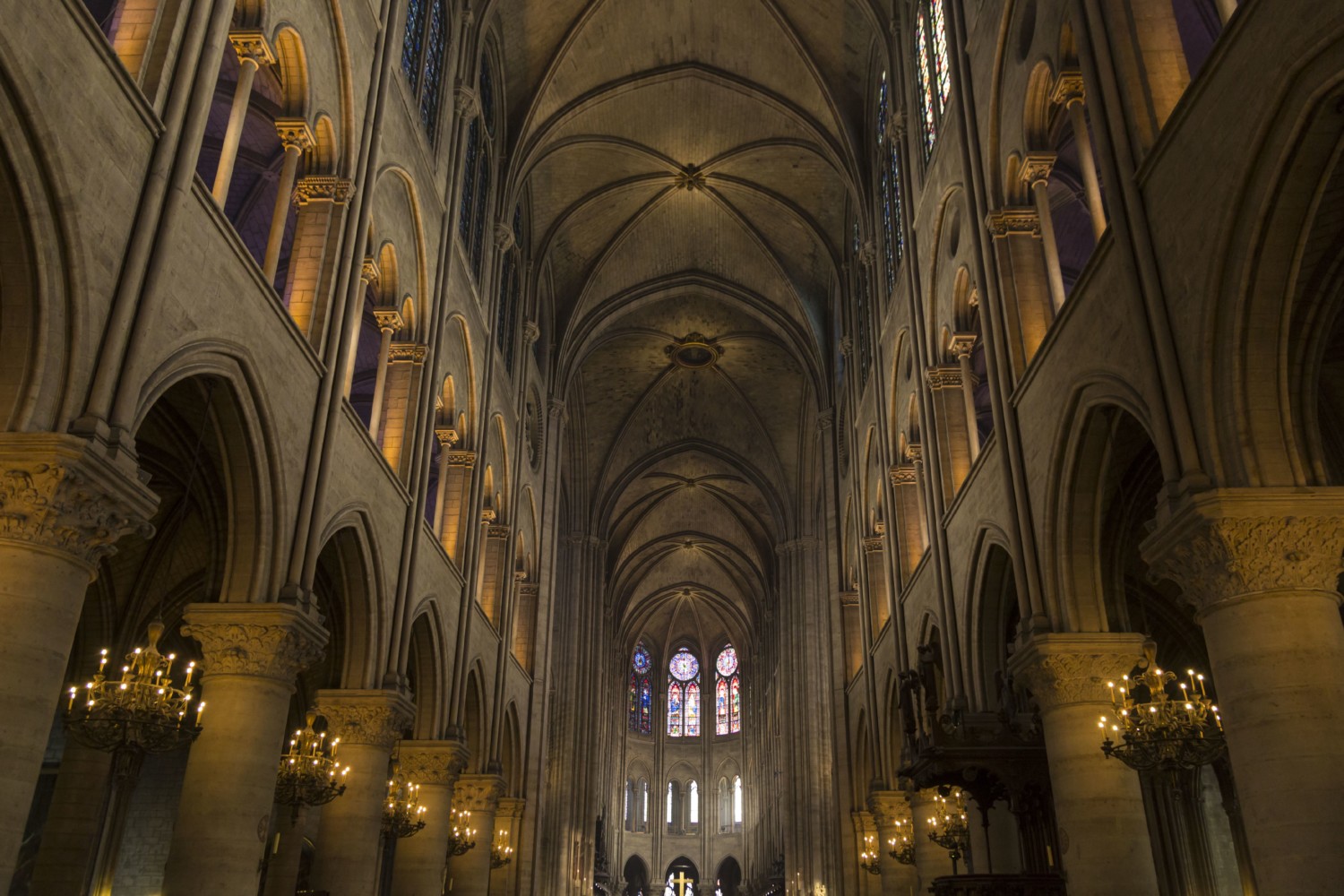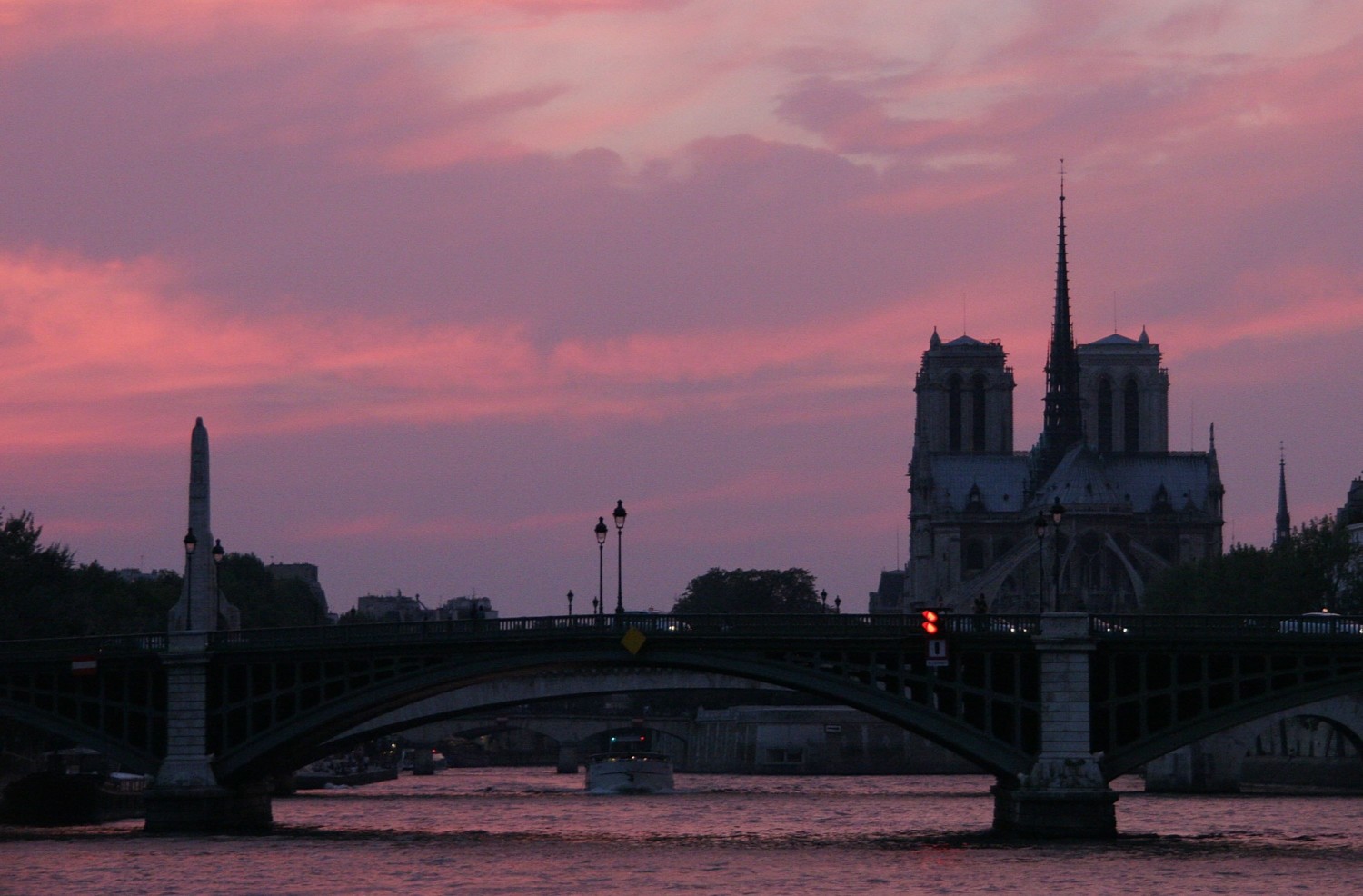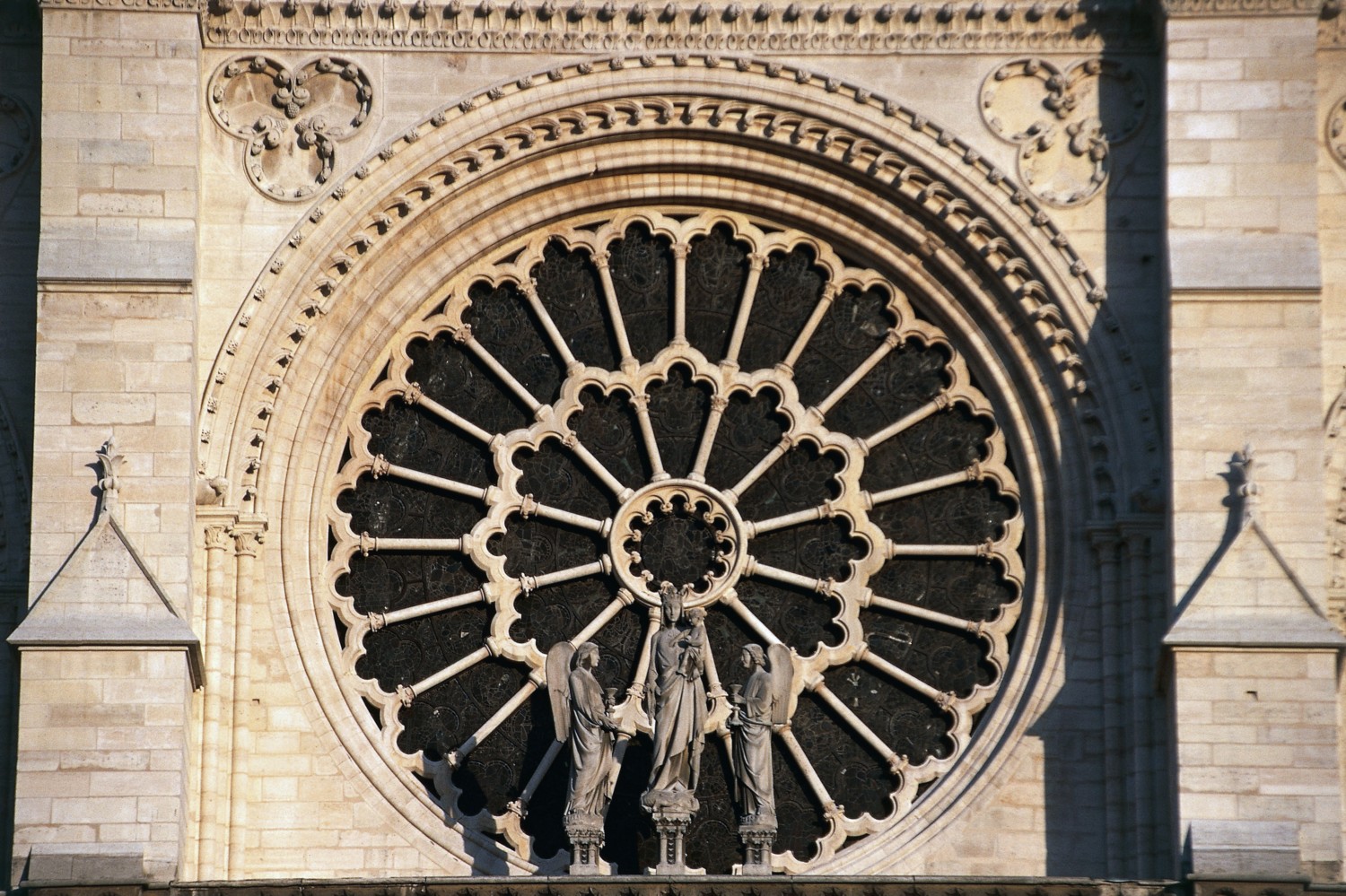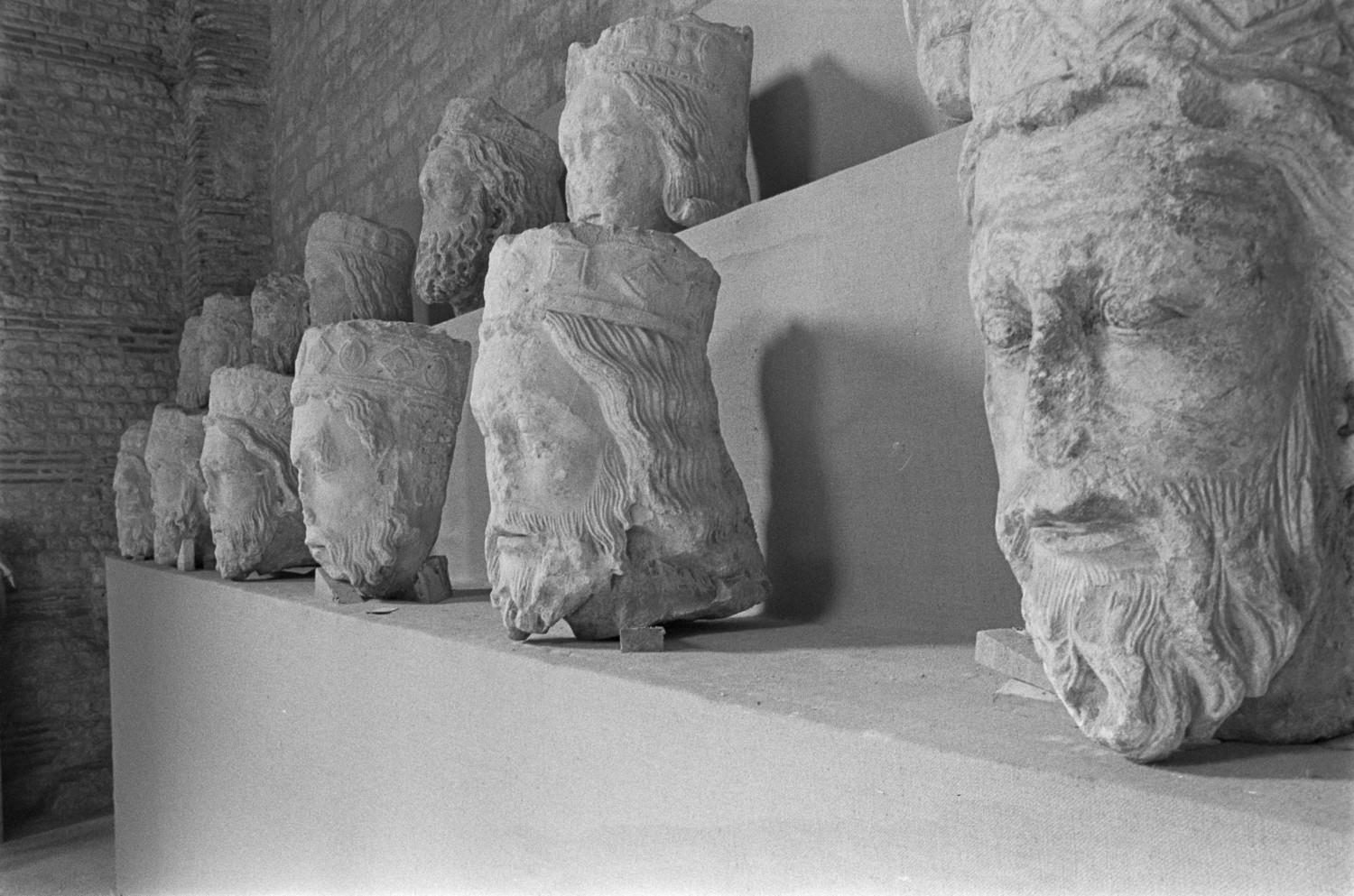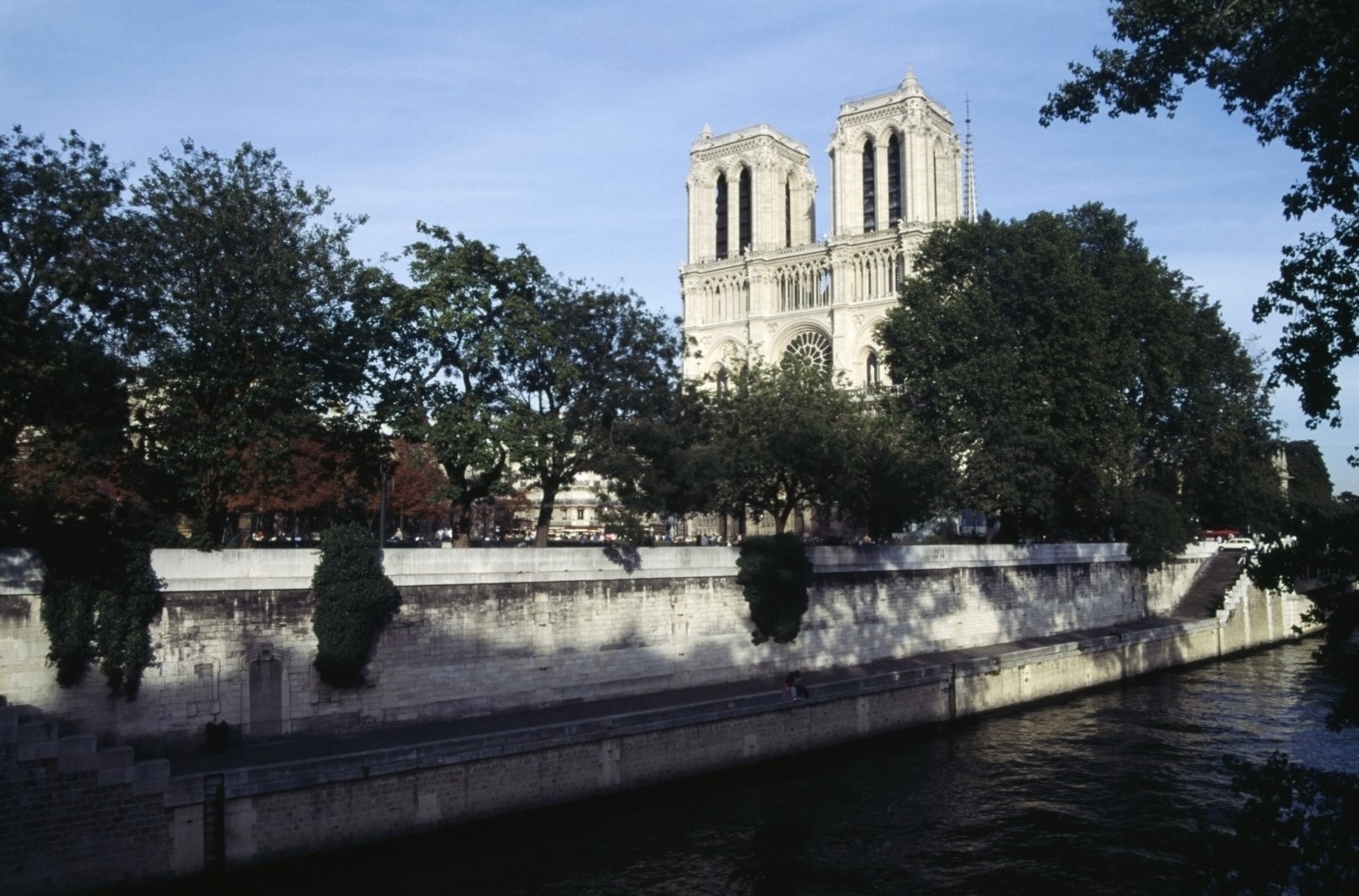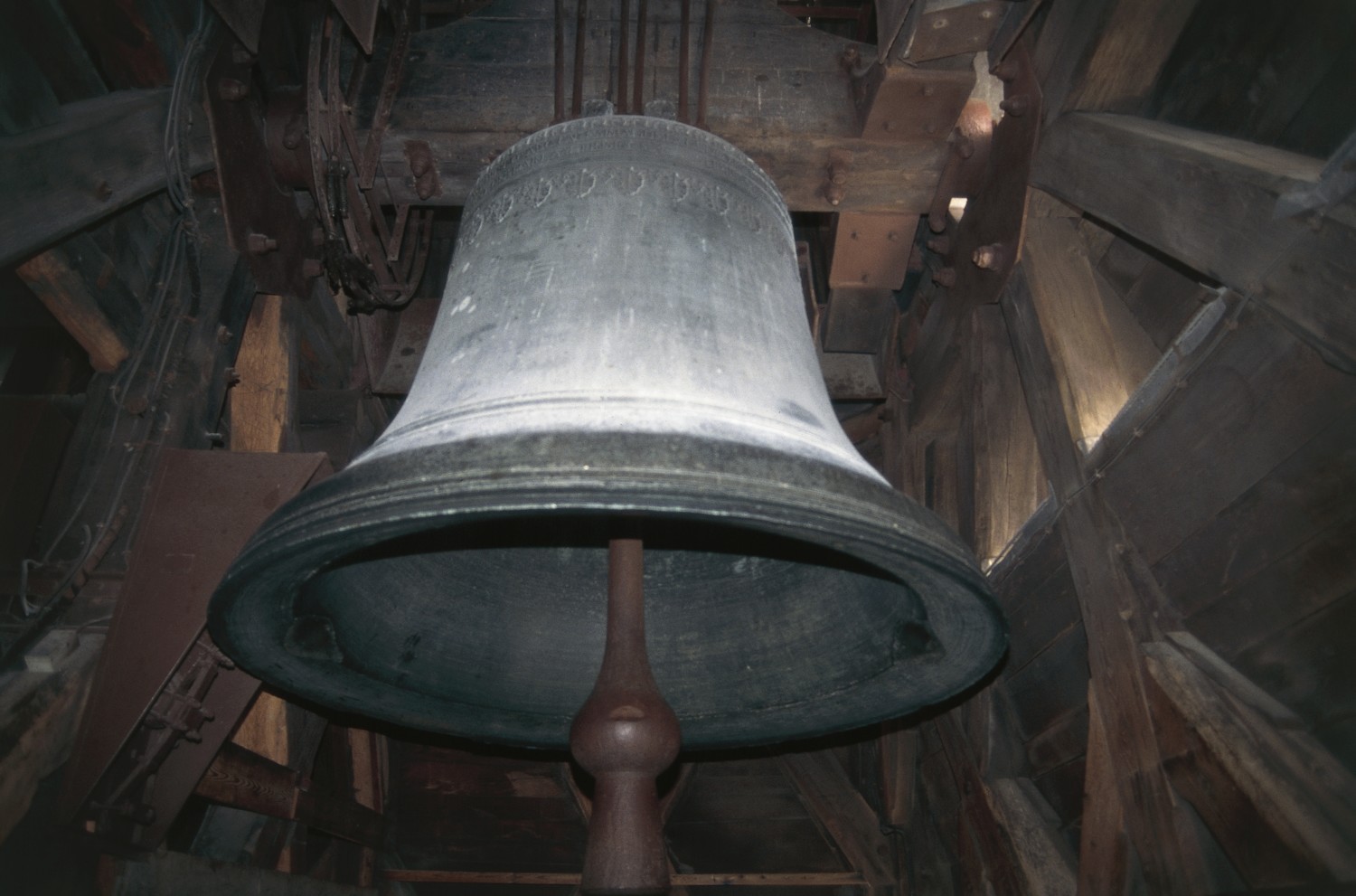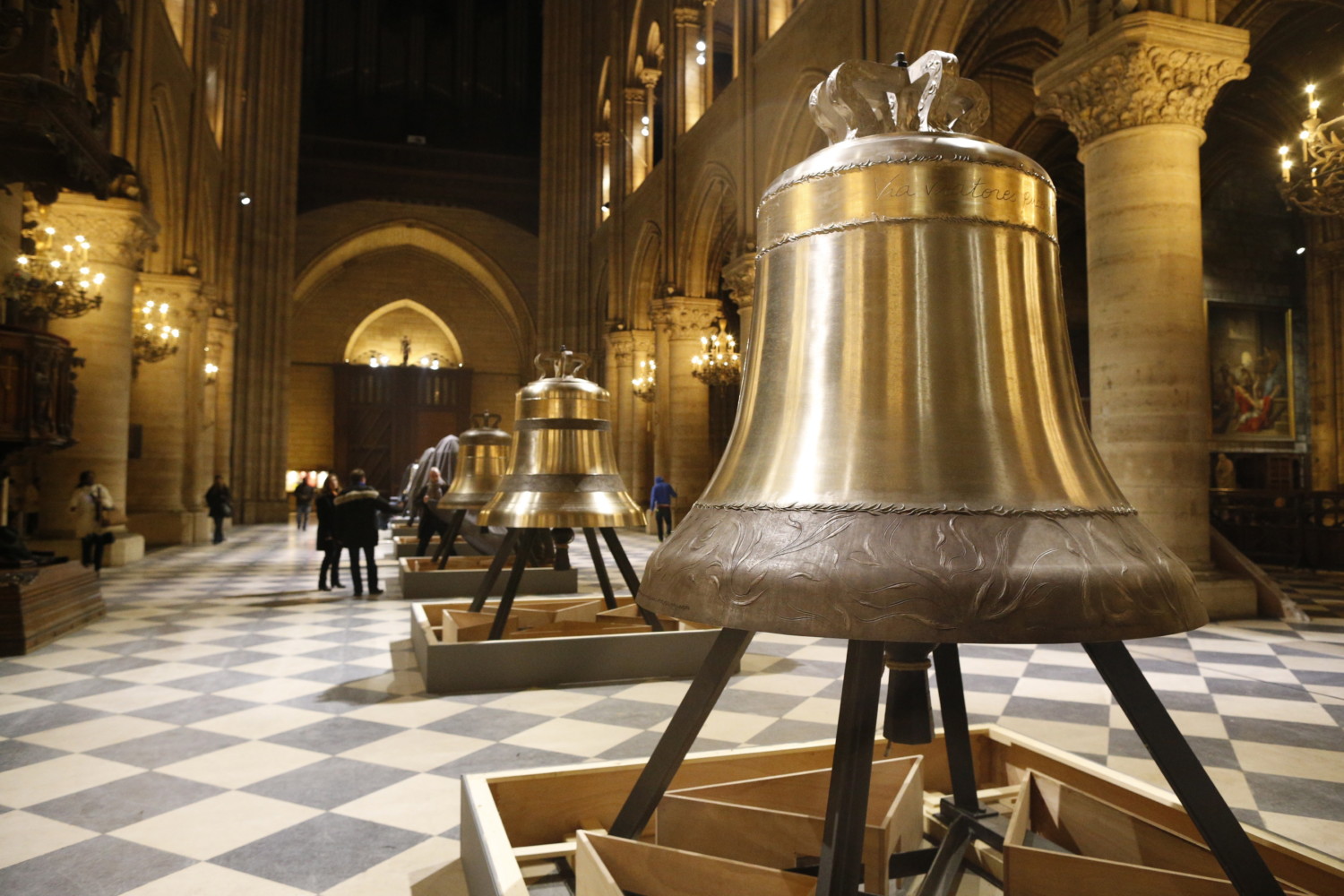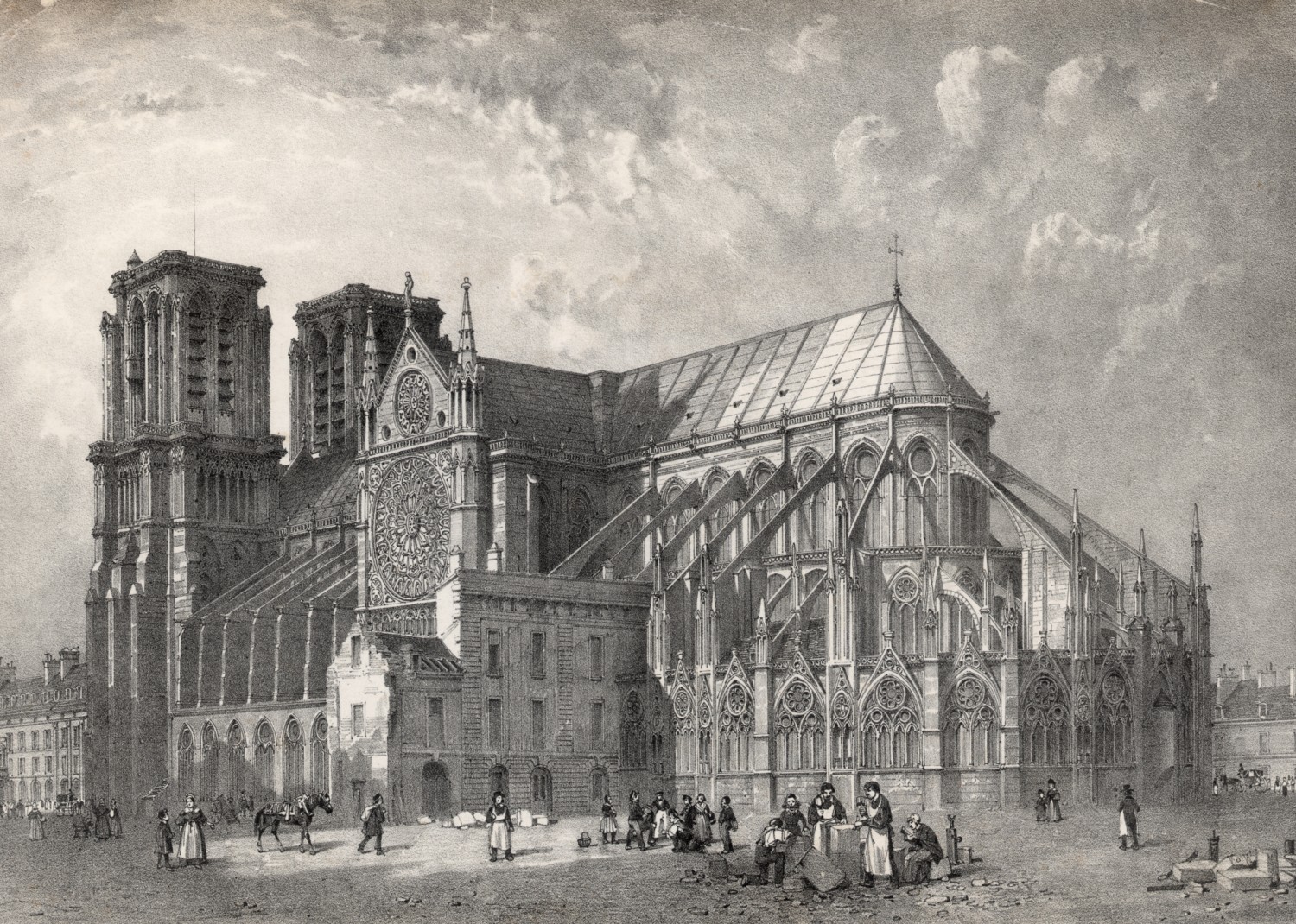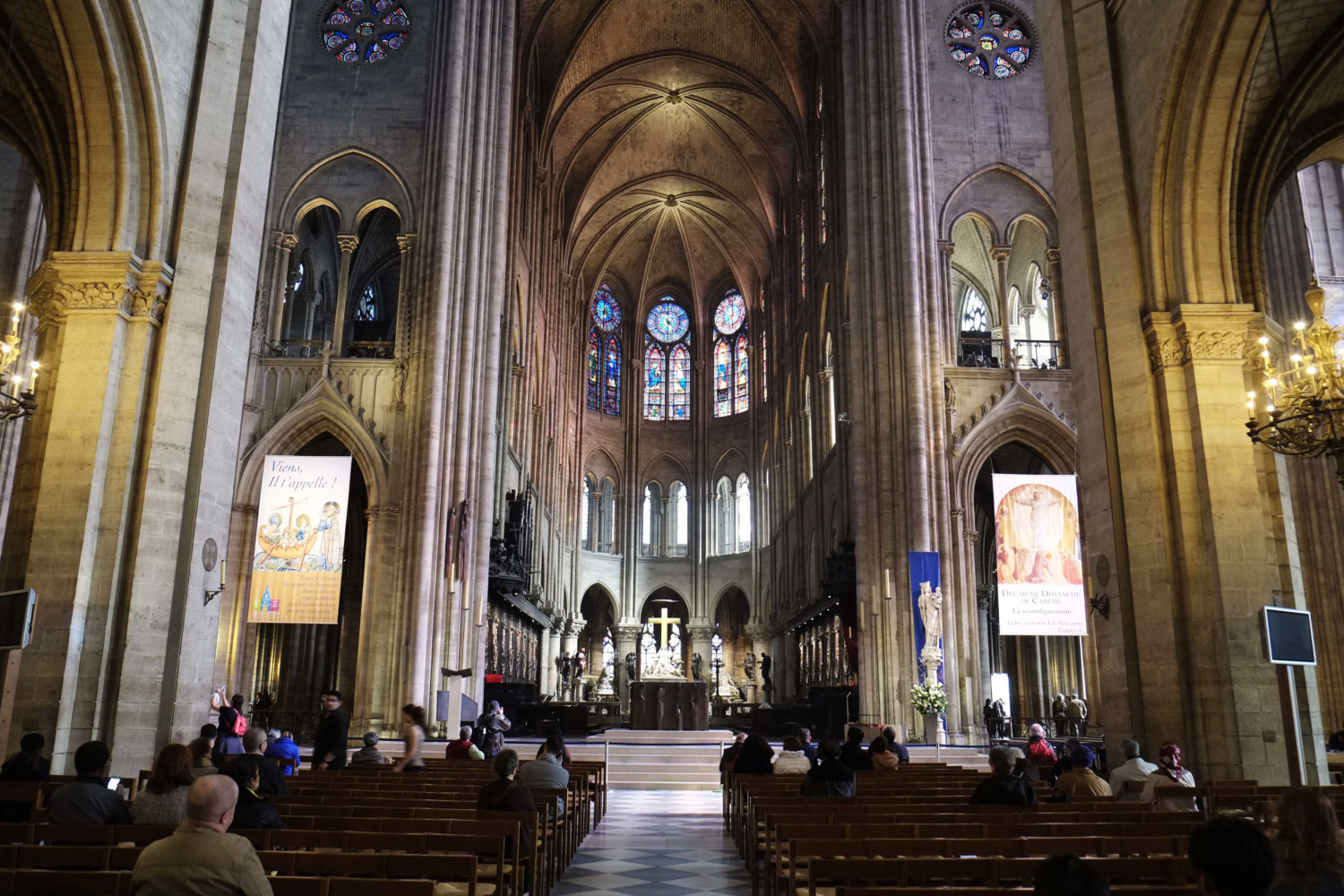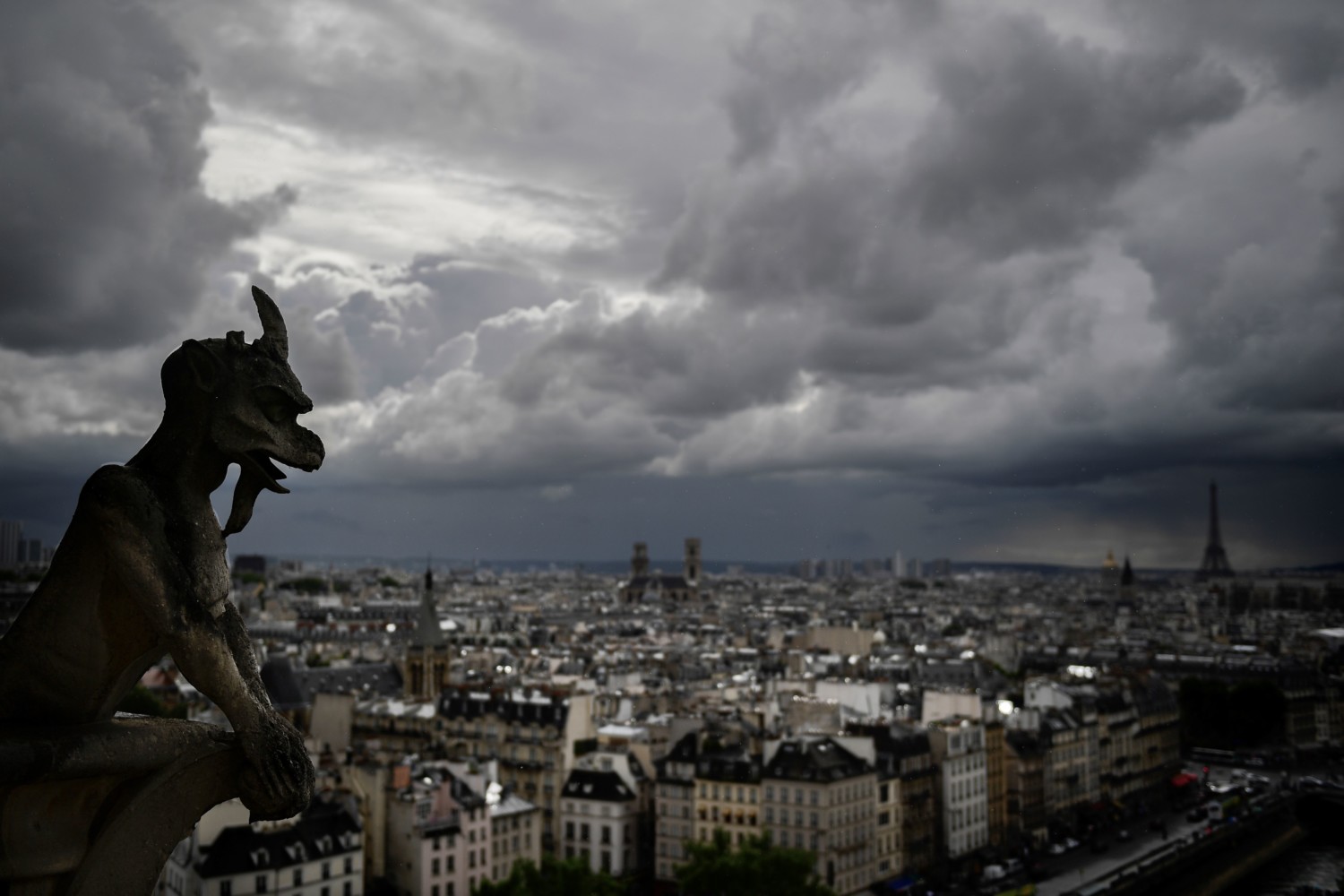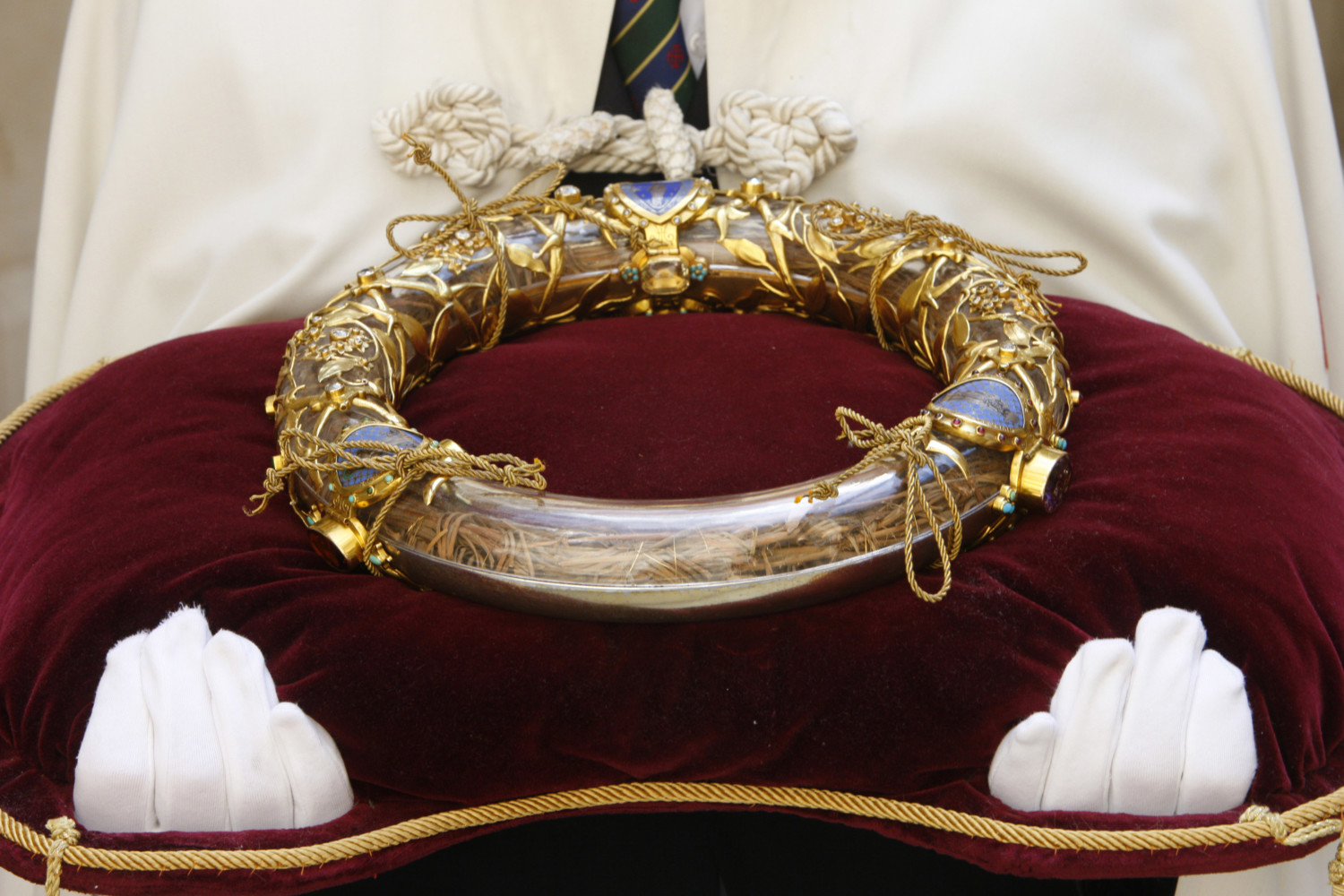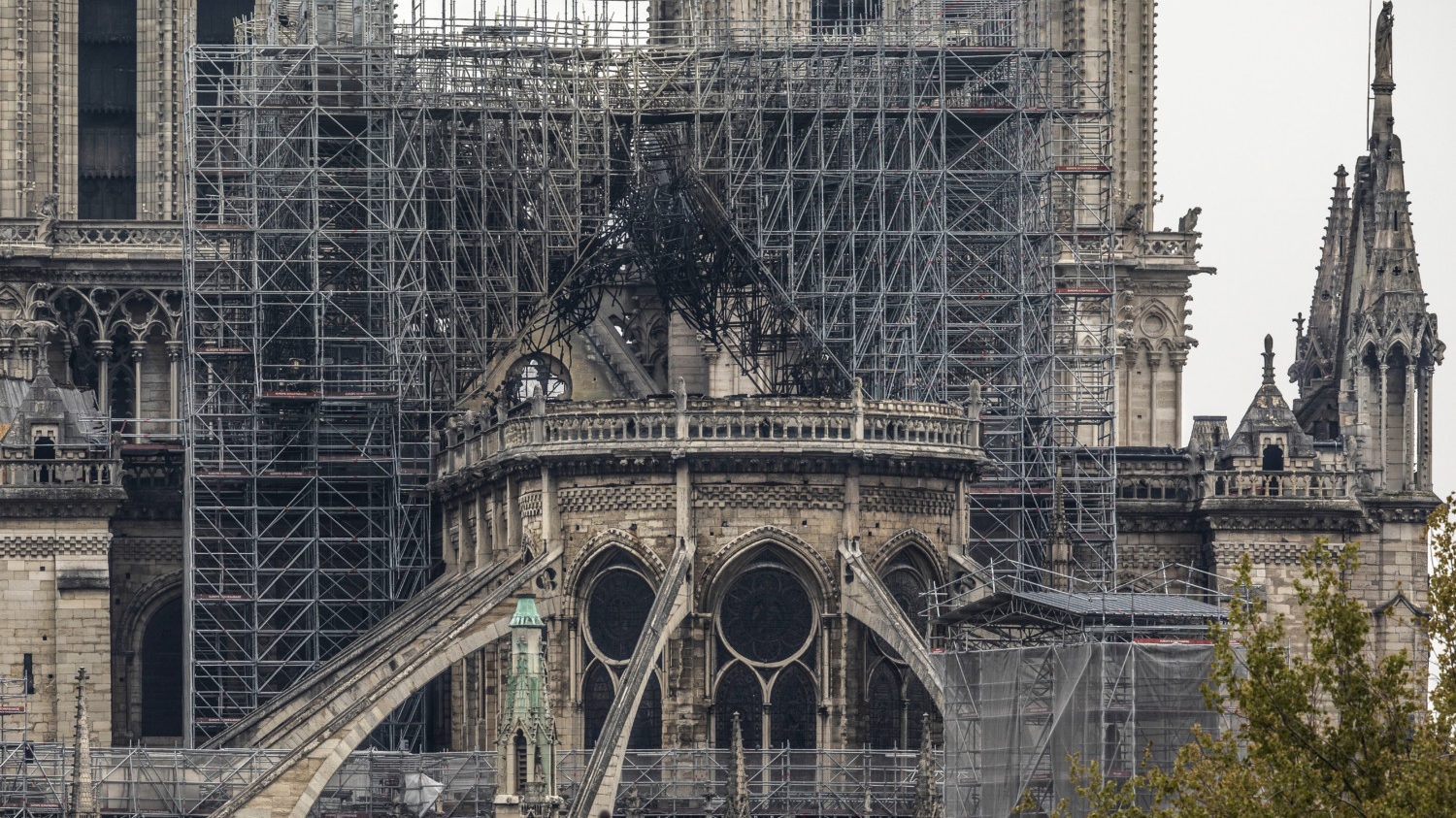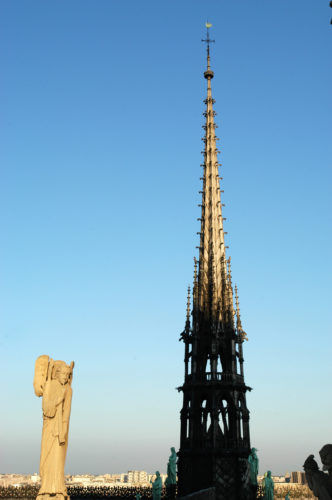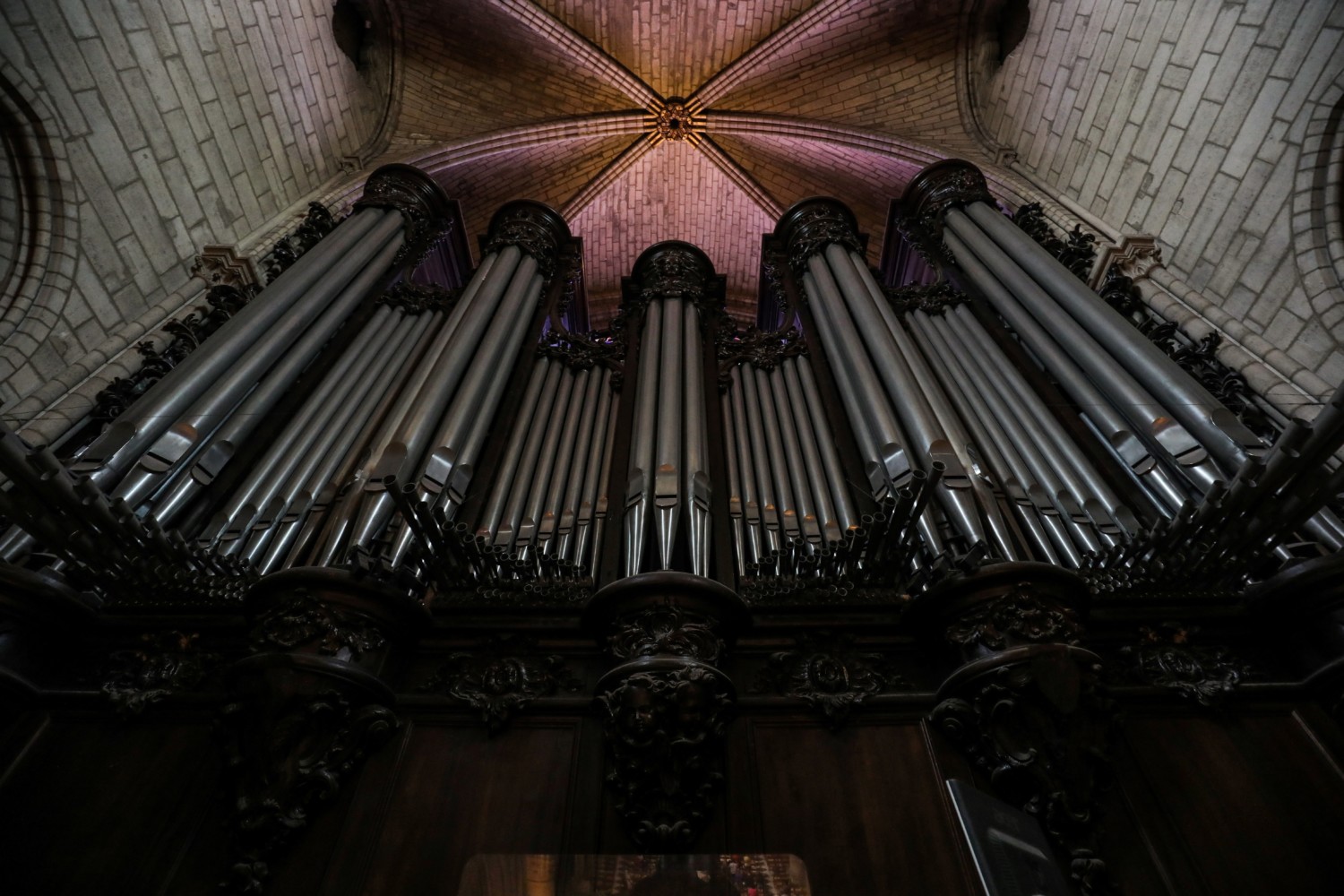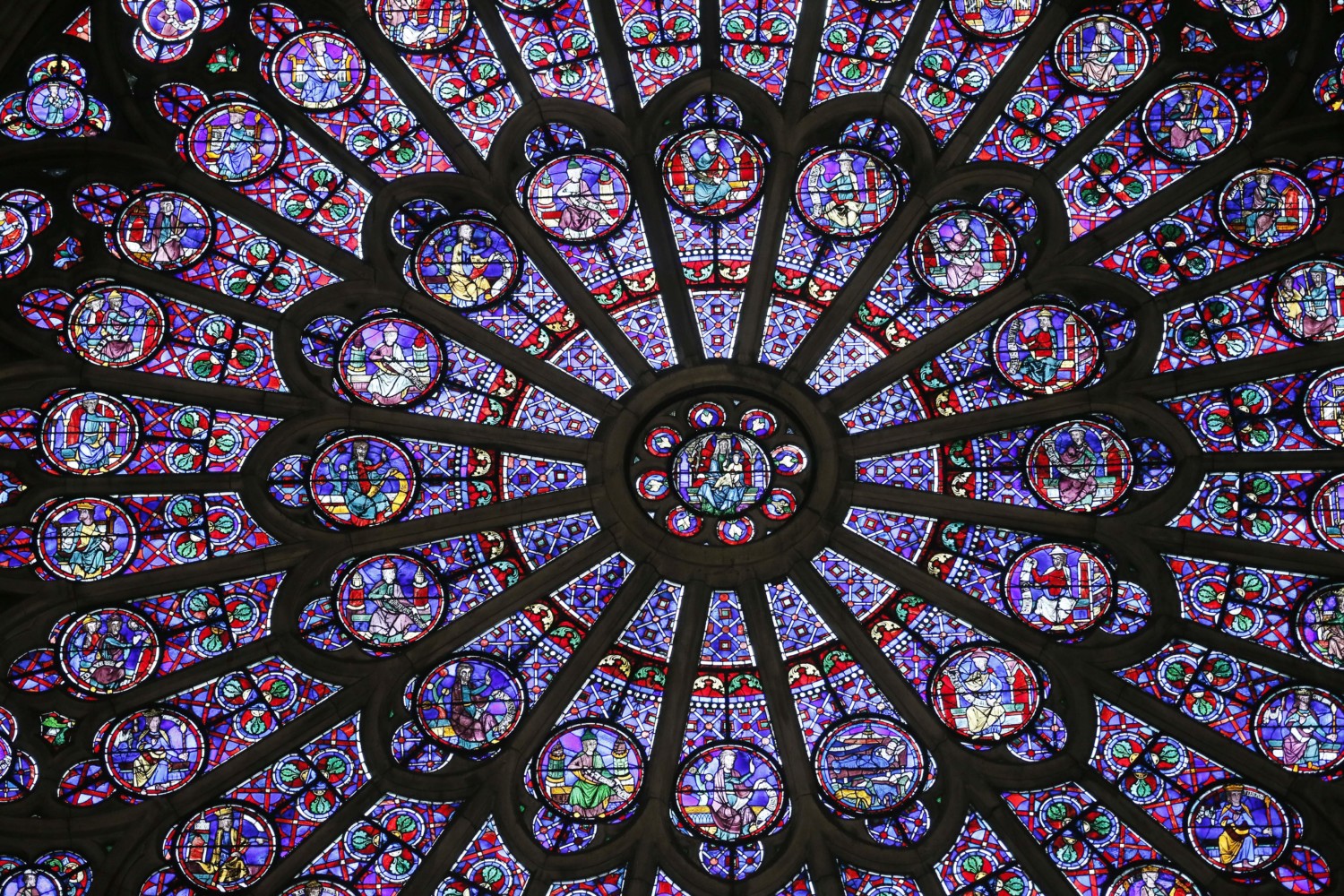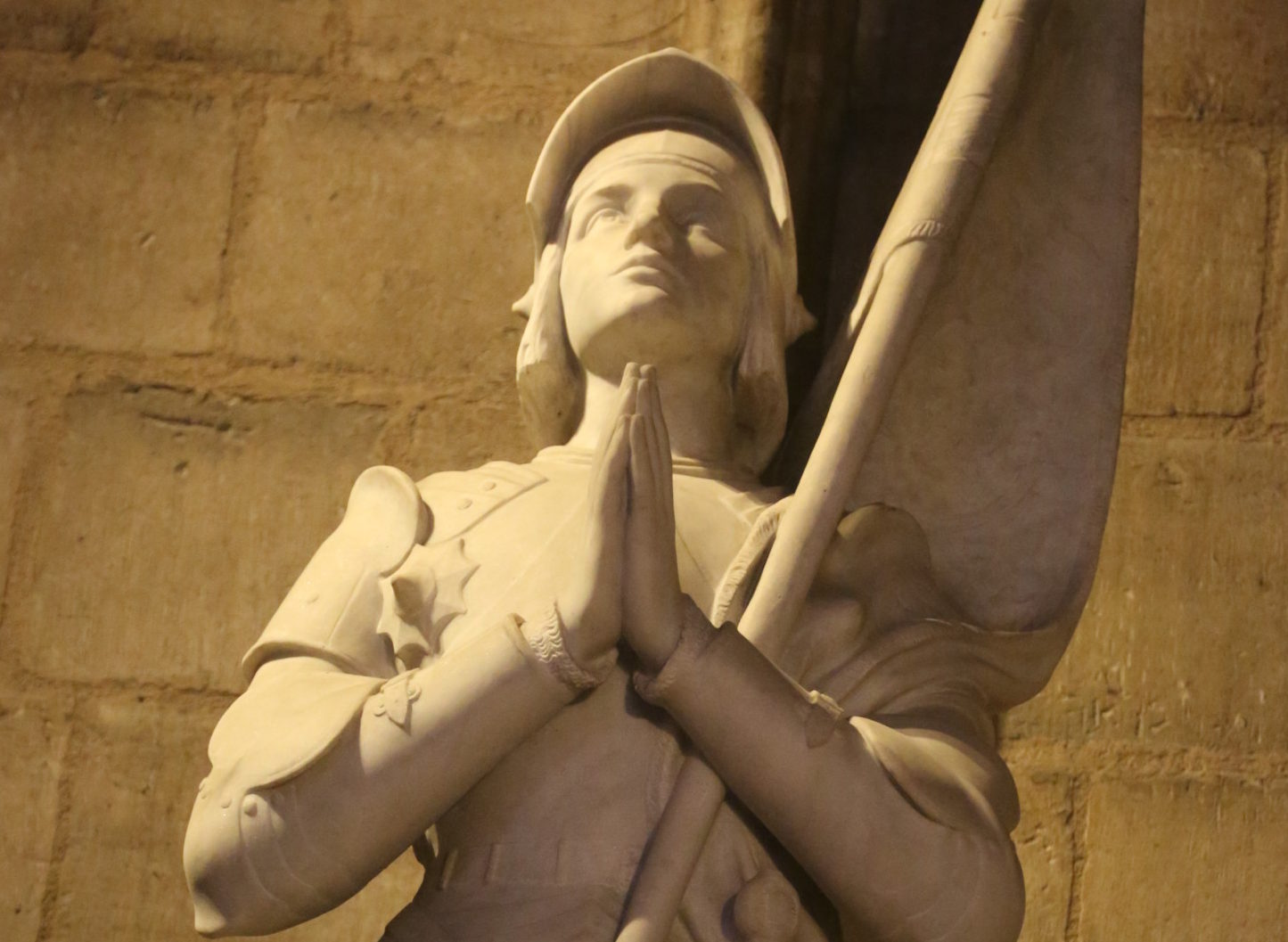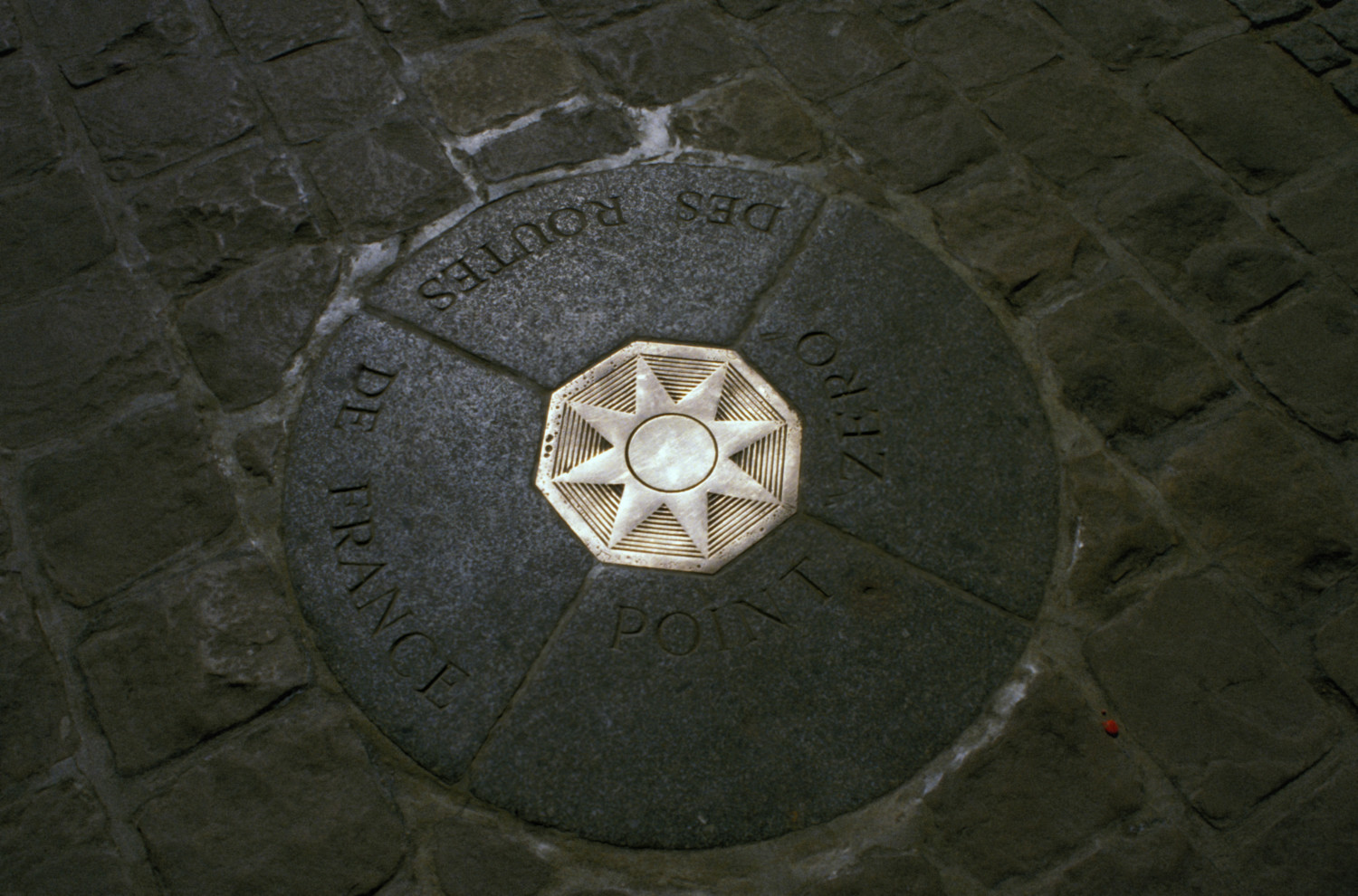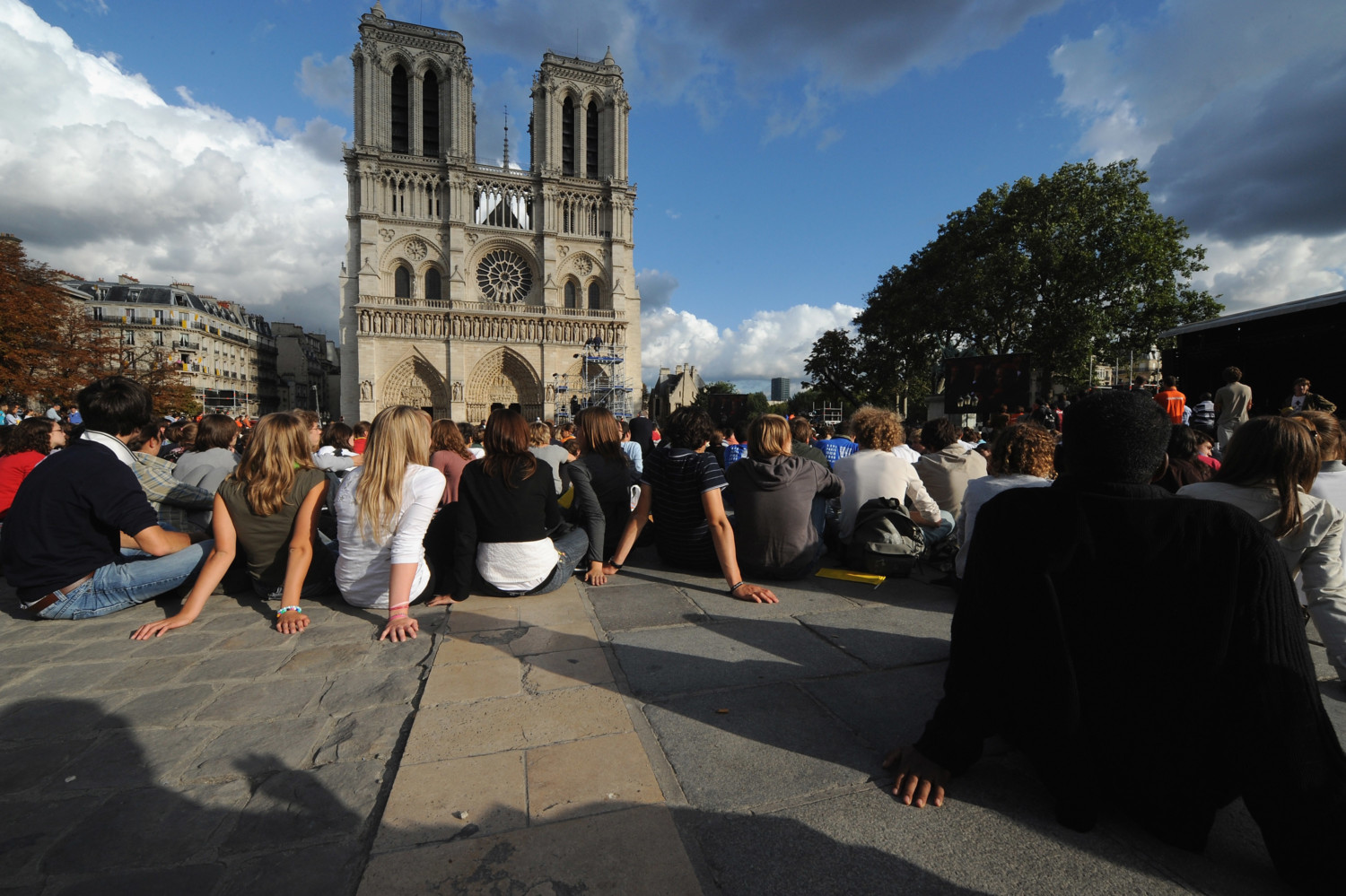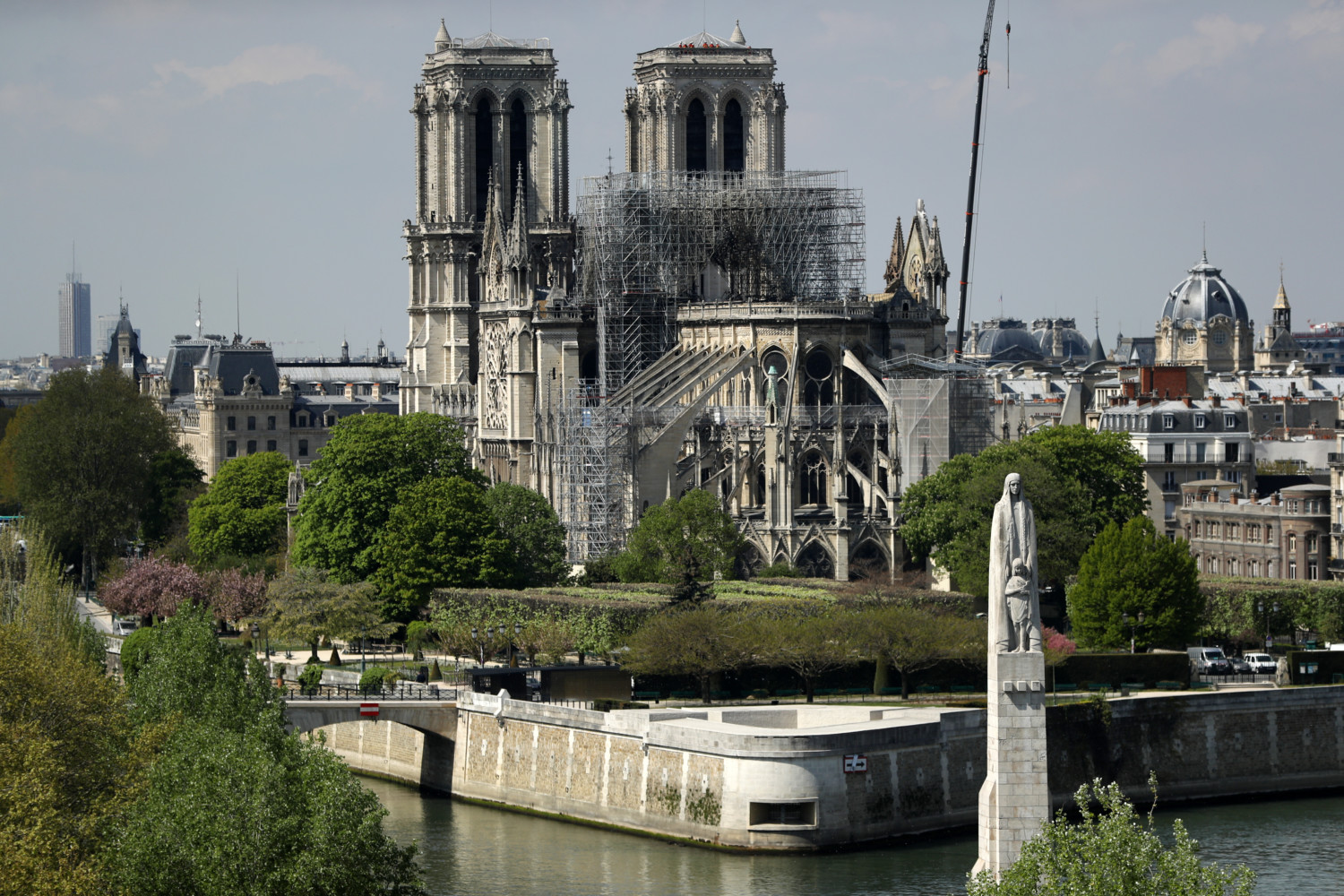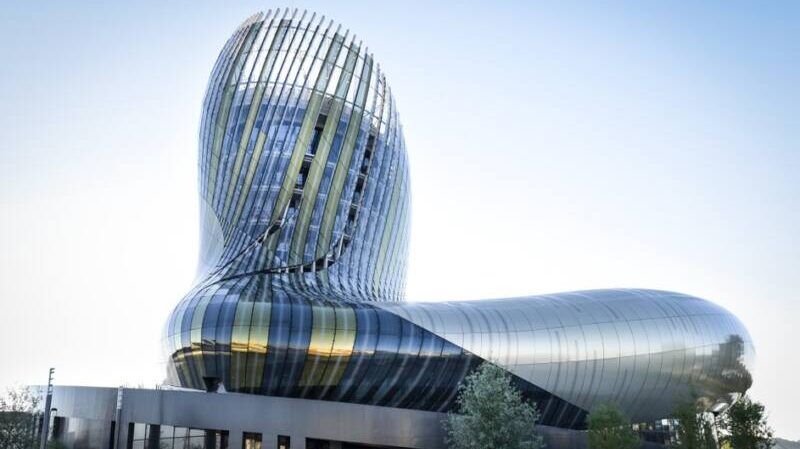Incredible Notre Dame facts you probably never knew
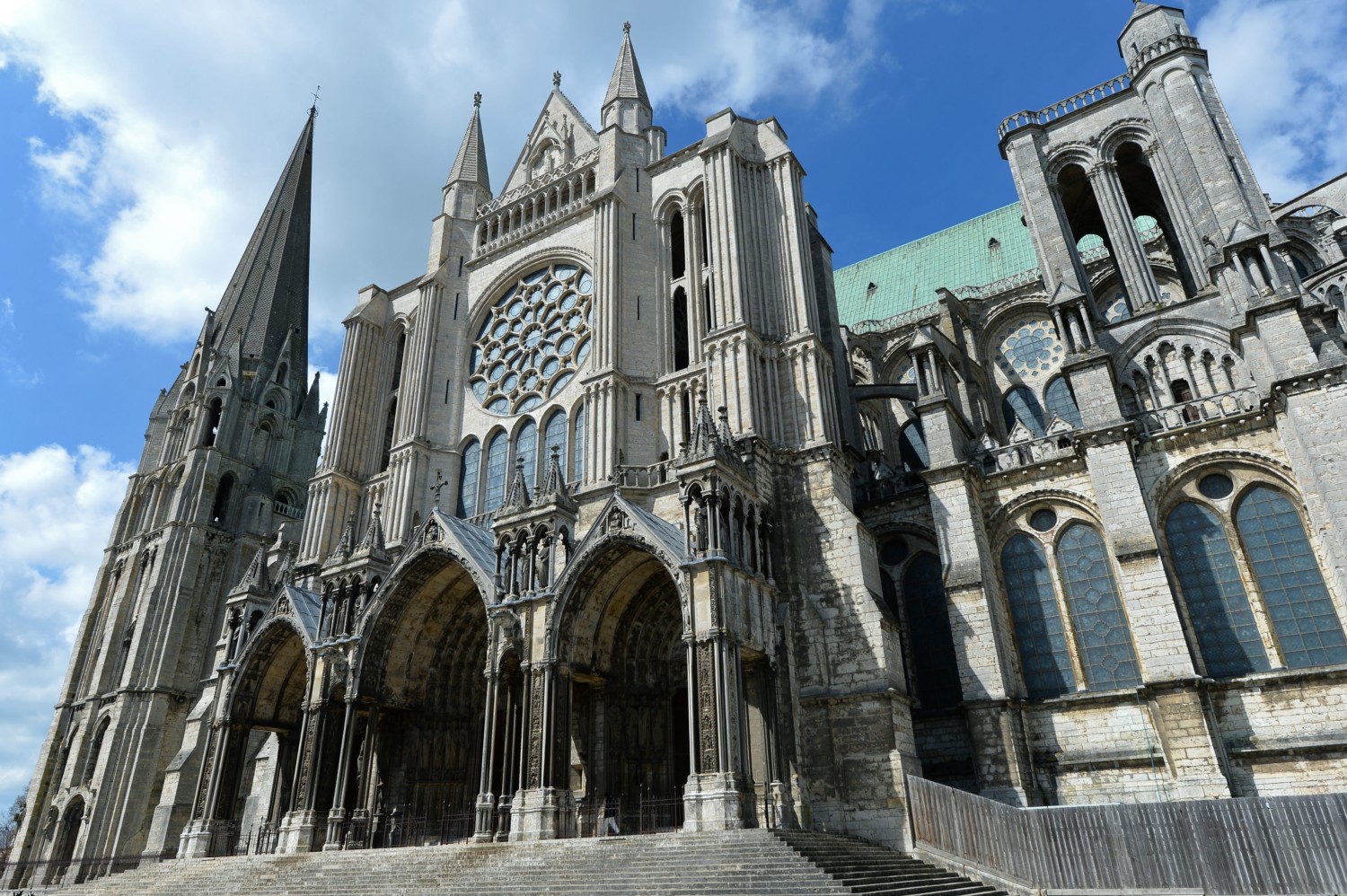
Notre Dame is one of France’s most iconic and historically significant locations, and it ranks as one of the most-visited sites in the world. Sadly, the cathedral suffered severe damage, including the destruction of its roof and spire, after a fire broke out in mid-April. As reconstruction efforts kick off, it’s worth taking a look back at the revered building’s long and profound history.
Here are some incredible Notre Dame facts you probably never knew.
Notre Dame Was Build As A ‘Rival’ Structure
After admiring the architecture of the Basilica of Saint-Denis, Maurice de Sully, who was Bishop of Paris in the 12th century, decided to create a rival structure dedicated to the Virgin Mary in the heart of Paris. Sully contracted an unidentified architect to design the new cathedral in 1160. But it took several years for construction — which required demolishing several houses in the overcrowded medieval neighborhood — to get underway.
Building Notre Dame Took Nearly Two Centuries
There was no such thing as instant gratification in the 12th century. Building the cathedral took nearly 200 years from start to finish and marked a lifelong project for Sully. The first stone was laid in June 1163, in a lavish ceremony attended by Pope Alexander III. The high altar was consecrated in 1182, and Sully was able to celebrate the first mass there. However, he died in 1196, almost 150 years before the completion of the main structures of the cathedral.
The Ruins Of A Pagan Temple Lie Underneath It
Notre Dame isn’t the first religious institution to sit in its spot on the Île-de-la-Cité. The location was previously home to the Gallo-Roman city Lutetia, and it’s believed the cathedral was built right over the remnants of a pagan temple. Around 1710, excavators discovered pieces of a sculpted altar dedicated to Jupiter and other deities under the choir.
The Cathedral Was One Of The First To Use Flying Buttresses
Notre Dame was one of the earliest structures to ever use flying buttresses in its construction. Originally built in the 12th century to lend extra support to the cathedral’s thin walls, they have become one of the institution’s most iconic elements. Notre Dame is now considered one of the most prominent examples of Gothic architecture in France and across Europe.
It Was Home To the Feast of Fools During The Middle Ages
Notre Dame has served as an iconic backdrop to Parisian lives for hundreds of years. During the Middle Ages, the cathedral played host to the annual Feast of Fools. According to National Geographic, this celebration “centered on a raucous ceremony in which a lowly member of society was appointed a mock pope or archbishop and presided over the festivities of the day.”
Notre Dame Has Been The Scene Of Trials And Executions
Thanks to its central location and prominence in the city, Notre Dame has long since served as a site for all kinds of gatherings and events — including several executions. In 1314, Jacques de Molay, the last Grand Master of the Templars, was burned at the stake on an islet next to the cathedral.
It’s Also Been The Site Of Several Royal Weddings
Notre Dame has also hosted multiple royal weddings. James V, King of Scotland, married Madeleine of Valois there in 1537. Mary, Queen of Scots also married her first husband, Francis, Dauphin of France, at the cathedral in 1558.
No One Liked The Cathedral’s 18th Century Revamp
With the 18th century came a radical shift in architectural tastes. That’s why, during the reign of Louis XIV, the cathedral underwent a drastic makeover — one that later generations lambasted and labeled more of an act of vandalism than a proper reconstruction. During the purported “restoration,” the stained-glass windows from the 12th and 13th centuries were replaced with clear glass, and several sculptures were pulled down.
28 Stone Kings Were Beheaded At the Cathedral In the 1790s
The so-called makeover was only the beginning of a rough few years for the cathedral in the early 1790s. During the French Revolution, the building, regarded as a symbol of power and the monarchy, was ransacked. Among the damage: The heads of the 28 statues in the Gallery of Kings on the main doorway were struck from their bodies. According to National Geographic, the crowd mistook the statues to represent the royal lineage of France, although they actually depicted the ancient kings of Judea and Israel.
As if that wasn’t bizarre enough, 21 of the sculpted heads were discovered more than 180 years later. Officials found them in a basement beneath the French Bank of Foreign Trade in a different neighborhood of Paris.
The Bells Were Once Used For Cannons
The king statues weren’t the only part of Notre Dame to sustain damage during the French Revolution. All 20 of its bronze bells in the cathedral, with the exception of one, were melted down to make cannons. The bells were eventually replaced in the 19th century. But the new instruments were badly tuned and made discordant, clanging noises. They were replaced again in honor of the cathedral’s 850th anniversary with new bells that recreated the sound of the 18th-century bells.
The Most Prominent Bell Weighs Over 13 Tons
Speaking of the bells at Notre Dame, the only one to escape destruction during the French Revolution is also the cathedral’s largest, the bourdon known as Emmanuel. The bell hinges in the south tower of the building and weighs a whopping 13 tons. It’s ringing has marked the end of two world wars, the coronation of several kings and various papal visits.
All Of The Notre Dame Bells Have Names
Like Emmanuel, the cathedral’s new bells all have names and have been blessed in holy water. All of the names have some special meaning, such as Marie, an homage to the Virgin Mary; Gabriel, which the features the first sentence of the Angelus; Anne Genevieve, a tribute to Saint Anne; Denis, in honor of Saint-Denis; and Maurice, after the bishop who started the construction of the cathedral, Maurice de Sully. Some of the other names included are Marcel, Etienne, Benoit-Jose and Jean Marie.
Notre Dame Was The Site Of Napoleon’s Coronation
By the end of the revolutionary period, Notre Dame was a shell of its former self. The building had been left destructed, its windows shattered and the interiors decaying. However, Napoléon Bonaparte later took back control of the cathedral, signing a concord with the Holy See to in 1801 allow the Catholic Church to fix it up. In 1804, the cathedral was in acceptable condition to hold the grand coronation ceremony in which Napoleon famously crowned himself emperor.
Victor Hugo’s Iconic Book Was Inspired By Its Massive Restoration
While Napoleon played a significant role in bringing renewed attention to Notre Dame, it was Victor Hugo’s iconic 1831 novel, “Notre-Dame de Paris” (often translated as “The Hunchback of Notre Dame”), that truly brought the iconic structure back into the limelight. The book’s success led to a renewed cry among Parisians to return the decaying building to its former glory.
A major restoration launched in the 1840s, led by architects Jean-Baptiste-Antoine Lassus and Eugène Viollet-le-Duc.
Its Famous Gargoyles Were Also Inspired By Hugo’s Book
Hugo’s book impacted Notre Dame in more ways than one. In addition to kickstarting plans for a massive restoration, it also inspired the design of the gargoyles that sit perched on the cathedral’s towers. That’s right — though many believe the creatures were part of the original design, they were actually added by Viollet-le-Duc in the 19th century. The architect modeled them after the description of the monsters in “Notre-Dame de Paris.”
Notre Dame Holds Remains From The Crown of Thorns
Notre Dame has longed housed remains from the crown of thorns, which the faithful believe was once worn by Christ and which the cathedral counts as its most revered relic. The artifact was rescued from the recent fire, as Paris Mayor Anne Hidalgo confirmed. It, along with some of the cathedral’s other treasures, have been relocated to Paris City Hall for safekeeping.
Its Roof Contained A ‘Forest’
Sadly, the flames that broke out at the cathedral in mid-April destroyed most of the cathedral’s historical roof. Before the fire, the roof consisted of some of the cathedral’s oldest surviving wood-timber beams, made from dozens of acres of trees cut down in the 12th century. For this reason, the roof’s woodwork frame earned the nickname “the forest.” Though the roof sustained severe damage, people have since donated millions of dollars towards restoration efforts.
The Roof Is Also Home To A Community Of Bees
Three beehives also sit on a roof above the sacristy — around 100 feet below the cathedral’s now-damaged main roof. The hives, installed in 2013, contain Buckfast bees, who make honey from the flowering plants in the nearby gardens. The cathedral donates the honey to the needy. Thankfully, the beehives seemed to have survived the fire, as confirmed by Notre Dame’s beekeeper, Nicolas Geant.
https://www.instagram.com/p/BwfMtHdo1UK/?utm_source=ig_embed
The Spire Served As A ‘Spiritual Lightning Rod’
Notre Dame’s iconic 300-foot-tall spire stood high on the Paris skyline for decades. But it sustained severe damage and fell in the recent fire. The spire, made of wood and covered in a protective lead coating, traced back to the mid-19th century when it was restored by Viollet-le-Duc. The spire — and particularly, the rooster that previously sat at the top —held significant religious meaning. According to the cathedral, the archbishop of Paris decorated the rooster with a piece of the crown of thorns in 1935, making the rooster a “spiritual lightning rod” to protect all the parishioners within.
Since the fire, French prime minister Edouard Philippe has announced that the government will host an international design competition to replace the lost spire.
The Organ Is The Largest In France
The cathedral boasts a grand organ consisting of almost 8,000 pipes, some dating back to the 18th century. The organ, initially installed in 1403 by Friedrich Schambantz, is thought to be the largest in France. According to the Daily Beast, it was renovated in 1738 by Francois Thierry, and parts of it have been replaced every 300 or so years until recent times. The organ is one of the cathedral’s treasures to survive the fire.
The Rose Window Was Once Removed
One of Notre Dame’s most well-known elements is its trio of stained-glass rose windows dating back to the 13th century. According to NPR, the North Rose Window was actually removed from the building’s facade during World War II because the French feared it would be targeted by the Germans. They re-installed it in the 1960s. Thankfully, all the rose windows survived the recent fire and have avoided any severe damage.
Joan Of Arc Was Beatified At Notre Dame
Pro-English clergy had Joan of Arc burnt at the stake for heresy in 1431, but a posthumous nullification trial in the 1450s eventually ended with a declaration of her innocence. The court annulled her sentence and declared that Joan’s conviction came as a result of “false articles of accusation.”
In 1909, the legendary figure was beatified in the famous cathedral in Paris by Pope Pius X.
Notre Dame Is Considered The ‘Point Zero’ Of Paris
Though easy to miss in the hubbub of tourists, a plaque outside of the cathedral designates Notre Dame as the literal center of Paris, otherwise known as “point zero.” The circular marker is the point from which distance from Paris to other locations in France are measured.
The Cathedral Gets More Visitors Than The Eiffel Tower
The Eiffel Tower may have overtaken Notre Dame as the tallest structure in Paris in the 1930s. However, it still falls behind in terms of tourist traffic. The cathedral is the most visited monument in Paris. According to the Washington Post, it receives visits from more than 12 million people each year — nearly double the number of visitors to the Eiffel Tower.
Donations For The Cathedral’s Restoration Have Surpassed $800 Million
Since the fire, the country has raised at least $835 million in donations towards the structure’s rebuilding efforts. Several French billionaires have pledged millions of dollars to help restore the structure to its former glory. So many donations have poured in that some have questioned whether too much money has been raised for the cause, some of which may be better spent elsewhere.


